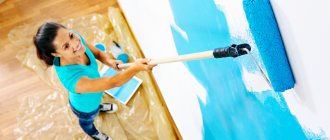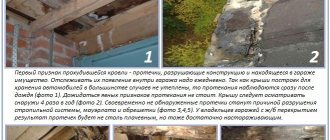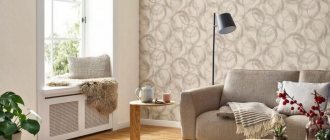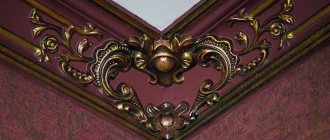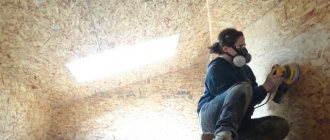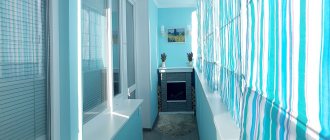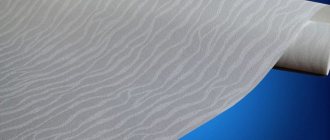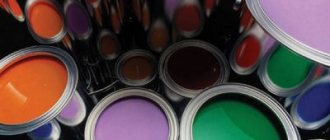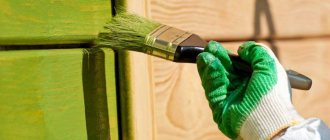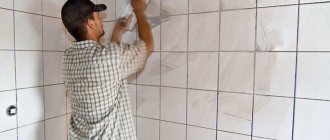The easiest way to renovate your apartment is to cover the walls with wallpaper. Cheap and cheerful, especially since the choice in stores is quite rich. True, after three or four years the operation will have to be repeated, since the coating is not particularly wear-resistant: it fades or turns pale from the sun, and easily gets dirty and torn. Most buyers are familiar with paper, vinyl, washable and even liquid wallpaper, but not everyone is familiar with fiberglass wallpaper, which is very popular in Western Europe. This material deserves special attention due to its practicality and durability. The editors of the Yanashla website bring to the attention of readers a review of “The best glass wallpaper for painting for 2022”, compiled based on customer reviews and expert ratings.
What is glass wallpaper called?
It would be more correct to call this product fiberglass wallpaper, because it is obtained using the weaving method.
The fabric itself and the process of its manufacture are very interesting and deserve a more detailed description.
Already from the name itself it becomes clear that the process uses glass in the form of small briquettes obtained by sintering the starting materials: soda, quartz sand, limestone and clay. All products are natural, therefore the final product will be environmentally friendly.
Glass briquettes are melted in furnaces until a homogeneous mass is obtained, which is drawn through the very small holes of platinum dies to produce a fine fiber. It is cooled and wound onto drums.
Interesting! A die is a high-strength plate with calibrated holes for pressing plastic materials through them. The die must be chemically inert and resistant to abrasion. Made from noble metal.
From the resulting fiber, a very thin and strong glass thread is spun into two types: warp and weft.
Both types end up on a special loom. The warp thread is dense and smooth, located in the longitudinal direction in the fabric. Weft is a more “shaggy”, fluffy thread, woven into the fabric in the transverse direction.
There are two types of glass weaving machines: conventional and jacquard. Materials of various textures are woven on conventional looms:
- "Christmas trees";
- "diamonds";
- "matting";
- "parquets".
Jacquard patterns are more complex and are made on a computer-controlled machine. The process is preceded by the development of special software. As a result, the pattern on the wallpaper can turn out to be whatever the designer comes to mind.
Interesting! Jacquard fabrics are dense fabrics with a complex large pattern. The name is due to the inventor of a special loom, Joseph Marie Jacquard.
The product is ready, but to give it stability it needs to be starched. This operation is performed on a special machine by impregnating fiberglass with a solution of special starch.
The fabric stabilized in this way is unraveled into two halves, the edges are trimmed and it is wound, already a meter wide, onto bobbins of 3-4 kilometers. Next, the fabric is wound into rolls with cuts of 25 meters, supplied with a product label and packaged.
How to choose glass wallpaper for a room and premises
It is recommended to use glass wallpaper with a high density
Before you decide which wallpaper to choose, we recommend reading some useful tips.
The main indicator of the quality of glass wallpaper is its density. When choosing this finishing material, you must be extremely careful, as it happens that unscrupulous manufacturers add a special starch impregnation to the composition of the canvases in order to increase this indicator. It is impossible to determine this at first glance, since wallpaper is packaged in rolls at production. The opportunity to see the defect appears during the process of gluing wallpaper to the wall, since the glue applied to it will cause the starch to simply dissolve. In this regard, when choosing fiberglass wallpaper, it is recommended to give preference to well-known and trusted brands.
white glass wallpaper with a relief stripe
Selection based on texture
Texture. This indicator can be artificially changed. There are manufacturers who, during the production of wallpaper, fluff the threads, which is why the texture becomes more voluminous. This becomes noticeable when gluing fiberglass sheets to the surface, when excess air is removed.
It is necessary to find out in advance whether the materials provided correspond to the characteristics indicated on the packaging. To do this, you need to take a piece of wallpaper as a sample and stick it on the wall. Then you need to cover the wallpaper with paint and see if there is a change in the properties of this wallpaper sample.
white glass wallpaper
In the process of choosing paint, you need to consider it through the prism of how regularly the surface will be under mechanical influence and how often cleaning is planned. Experts recommend choosing latex and glossy paints. For those rooms where there is a lot of foot traffic, you should choose paint that has a water-resistant effect - then it will not wear off during use. In the photo for the article you can see the glass wallpaper in the hallway - a very visited place in the apartment - after quite a long time of use.
Siekloo wallpaper “cobweb”
When choosing wallpaper for the ceiling, experts advise buyers to choose “cobweb”. There is no relief or texture on it, and therefore there will be no need to adjust the pattern. Fiberglass also has reinforcing properties, which allows you to obtain a surface that is resistant to mechanical stress.
glass wallpaper with diamond-shaped texture
To cover the ceiling, it is allowed to use materials with poor resistance to mechanical damage. Such glass wallpapers have less weight, so they are easier to glue to the surface. The fact is that the ceiling is not subjected to various types of mechanical stress and does not often become dirty, so you can save a little on the material.
For wall coverings, it is best to choose first grade wallpaper, as they have good performance characteristics. In order not to make a mistake when choosing the type of such finishing material, you should look at the number of meters in the roll. If there are up to 15 meters in a roll, then it is second-class wallpaper; if it is 25 or more meters, then the wallpaper, accordingly, belongs to the first-class coating.
glass wallpaper is suitable for rooms with high traffic volumes
Some tips
Fiberglass wallpaper can be used in any room, as they are strong, durable and resistant to various types of influences. They are well suited for rooms with high traffic volumes. This is a living room, a children's room, an entrance hall. It is also necessary to take into account how often wet cleaning can be done using chemicals. Also, such wallpaper is simply an excellent covering for walls in the kitchen and bathroom. Fiberglass wallpaper is non-flammable and non-toxic, so it can also be used as a decorative covering for stoves.
To determine the amount of material consumed, it is necessary to calculate the area of the future surface to be pasted in length and width. You should also remember that you will need about 10 cm to adjust the pattern with an allowance for each piece that is cut.
What types of glass wallpaper are there?
This is a coating of rare durability. Manufacturers assure that their products will serve the buyer for at least 30 years, without loss of consumer properties. They can be painted, not just once, but dozens of times. The technology for gluing them is practically no different from working with paper counterparts. They will not spoil the most sophisticated interior.
There are two main types of fiberglass wallpaper:
- Fiberglass for painting. The fabric is so thin that it is called gossamer. Produced without patterns. It is used as a reinforcing coating for walls and ceilings with their subsequent painting.
- Fiberglass wallpaper. Thicker fabric with simple patterns or jacquard. Used as a coating for painting.
Advantages and disadvantages of glass wallpaper
The popularity of fiberglass wallpaper in our country is growing every year, thanks to its very attractive qualities:
- environmental cleanliness and health safety;
- very durable material, it is almost impossible to accidentally tear it or damage the surface;
- absolutely fire-resistant, does not burn even in a fire;
- breathing;
- does not rot, does not mold, inhibits the development of fungus;
- it can be painted and repainted;
- easy to clean with cleaning products and a brush;
- properly glued, can withstand use for more than 30 years.
A finishing coating with such characteristics is perfect for office premises and public places with a large number of visitors: shops and supermarkets, hotels, inns and even museums. However, for every barrel of honey there is always a fly in the ointment. And the material we are considering is no exception. Or rather, some of the advantages of its use are also disadvantages:
- if the apartment owner gets tired of the decor pattern and decides to change it, he will have to work hard, given the strength of the product;
- Having familiarized yourself with the manufacturing process of the material, it is not difficult to guess that its cost is much higher than the cost of paper wallpaper;
- the number of patterns is actually not as large as we would like;
- a pattern with a small relief can be completely hidden under several layers of paint.
Criteria for choosing glass wallpaper
To avoid making mistakes when choosing, you should consider several basic parameters:
- density value;
- features of the pattern;
- description of the composition;
- packaging quality;
- who is the manufacturer.
Each of the criteria deserves detailed consideration.
Density
A parameter that serves as an indicator of strength and durability. The dependence on density is directly proportional - the denser, the stronger, more durable, and can withstand more layers of paint. Canvases with a density of 100 g/cm2 or more are considered high-quality. They are also the most expensive. Less dense coatings (up to 100 g/cm2) may not last up to 30 years of operation and are inferior in strength to high-quality ones. But they are cheaper.
Patterns
The main types of drawings have already been listed:
- matting;
- Christmas trees;
- diamonds;
- raindrops on glass;
- parquet;
- rice paper.
The choice is small. True, manufacturers do not stop there, and from time to time they develop new designs, so you can always choose an interesting option for decorating an apartment. Particular attention should be paid to the depth of the pattern relief. The larger it is, the more layers of paint can be applied to the fabric in the future, preserving the design.
Composition of fiberglass and packaging of rolls
A very important parameter. A quality product should consist of 70% glass. The remaining 30% comes from impregnation. This is the ideal composition and information about it should be present in the accompanying documentation. Deviations from this ratio, as well as a complete lack of information about the composition, should alert the buyer.
To prevent the user from confusing the front side with the back side when sticking wallpaper, the manufacturer applies special marks to the back of the canvas. The fabric should not have weaving defects. The edges of a quality product are always cut evenly and should not crumble. You should also pay special attention to this when purchasing.
The best manufacturers
The quality of products directly depends on the manufacturer. The best companies, which have been working in this market segment for many years, have proven themselves to be of consistently high quality products, constant innovation, and expansion of the range. Some of them are worth getting to know better.
- Tassoglas
American brand product. Production facilities are deployed in China, Europe and the USA. The sale of goods is carried out with the obligatory attachment of a quality certificate confirming environmental friendliness, fire and sanitary safety. Practical and high-quality canvas is ideal not only for covering the walls and ceilings of living rooms, but also for renovating various offices and institutions.
- Nortex
Russian brand with production facilities in China. Premium class products are distinguished by high quality and increased density, up to 200 g/m2, with a warranty period of more than 30 years. The density of economy class wallpaper does not exceed 100 g/m2 and is more affordable. As an original and durable decor, they are suitable for finishing different rooms.
- Vitrulan
The owner of the trademark is a German company – a leading manufacturer of fiberglass wallpaper in Europe. It all started with a small glass factory in the city of Haselbach in 1896. Already in 1921 the company produced glass fiber and glass wool. In 1929 the company became Vitrulan.
Interesting! The company name comes from the Latin words Vitru - glass and lan - fiber.
In 1931, the company first produced fiberglass wall coverings in various colors. Today, Vitrulan Textile GMbH specialists conduct constant scientific research in order to improve the consumer qualities of their products. At his request, the client can order a coating with specified properties: smoothness, softness, hardness and color, chemical fire resistance.
- Wellton
The world-famous Swedish brand has been producing wall coverings of high quality and stylish design for many years. Production is established at factories in Sweden, Germany, Russia, the Czech Republic and China.
- Oscar
Wellton's subsidiary produces its popular and inexpensive models in China. Product quality is high, prices are more affordable.
- X – Glass
Russian brand with production in Russia and Finland. Produces high-quality canvas and fiberglass in the middle price segment. The assortment is quite wide.
- Brattendorf
The brand is from Germany and belongs to the relatively young company Preiss Daimler group Industriegesellschaft GmbH Glasfaser Brattendorf (Haglasta). The high quality of the product allows it to be used not only in any residential premises, but also in hospitals and cancer centers, schools, kindergartens, museums and pharmacies. On the Russian market, the product is supplied under the Brattendorf brand, in EU countries it is known as Haglasta. The popularity of fiberglass wallpaper models from this brand is explained by their high quality
- Saint-Gobain Novelio
Joint Franco-Czech production with the involvement of Italian designers led to the appearance of high-quality colored glass wallpaper on the market. The collection includes several textured and more than twenty color solutions. Saint-Gobain Novelio coatings are widely used for finishing walls and ceilings in hotels and spa centers, and other elegant and expensive interiors.
- Erfurt
The German company has been producing wallpaper since 1827. It gained worldwide fame by producing high-quality paper wallpaper Rauhfaser, which is incredibly popular today. Erfurt fiberglass coverings are a guarantee of quality and durability.
The list of the best manufacturers can be continued for quite a long time. It is impossible to immediately say which company is better to buy a product from. This depends on the type of work (preparing walls for finishing or finishing), the category of the room, its fire hazard, etc. In any case, it is worth asking professionals how to choose the right product, listen to the advice and recommendations of the store seller, read the description and clarify the characteristics , find out how much the selected product costs and make an informed decision.
Caring for fiberglass wallpaper
Glass wallpaper does not require special care; the material is very durable and strong. Fiberglass can be safely used in rooms with high humidity. Wallpaper can be wiped with a damp cloth and even washed using various detergents, there will be no abrasion.
In conclusion, I would like to say: if you like to change color schemes in your apartment, then glass wallpaper is ideal. Withstanding dozens of colors, such wallpaper will become an excellent backdrop for the realization of any fantasy.
Where to buy glass wallpaper
Of course, it is better to buy building materials in specialized stores. Here you can look and touch the product, evaluate whether there are any defects, whether the edges are cut smoothly, and see with your own eyes the texture of the canvas and its color (if you are purchasing an already tinted product). If this is not possible, all you have to do is order the product online in an online store. Some of them can be found on the Yandex Market pages. There you can also find a description of the product, navigate by price and choose a store by studying reviews of customers who have used its services. If everything is satisfactory, you can place your order and delivery here.
How to work with glass wallpaper
The technology is practically no different from gluing paper wallpaper. However, given the properties of fiberglass, there are some nuances.
Surface preparation
First of all, you should remove old wallpaper, peeling paint, damaged plaster and putty. Potholes are eliminated with leveling putty, sagging mortar or concrete is cut down and smoothed. You can ignore small cracks, since glass wallpaper will perfectly hide them and prevent their further opening. In rooms with high humidity, walls are treated with special compounds that prevent the formation of mold and mildew.
Cutting the canvases
Cutting the canvas is done with a knife or scissors. Do not forget that you will have to work with glass, albeit in the form of a thin fabric. The edges of the thick material will certainly crumble when cutting. Fine glass dust hangs in the air and gets on the skin, eyes and respiratory tract. For your own safety and health, work should be done in clothes with long sleeves and a closed neck. A gauze mask will protect your mouth and nose. It is better to cover your eyes with glasses. The work is performed with gloves. When cutting the canvas to the height of the room, be sure to leave an allowance of 5-10 cm. This is necessary to match the pattern at the joints.
Gluing and painting
The process uses only special glue, which is applied to the wall with a roller. Other adhesives will not be able to support the weight of the canvas. Finding the right glue on sale is not a problem. Almost all manufacturers produce and sell special formulations along with the main product.
Important! The front side of the wallpaper is identified by the presence of a pattern. When working with smooth painting fiberglass, the front side is smoother, the back side has roughness for better adhesion to the wall.
The canvas is applied to the prepared wall and rolled with a roller, a clean dry rag, or a plastic spatula, removing air and excess glue. The same procedure is performed with the next canvas, making sure to match the pattern and leaving no gap. The resulting bubbles and irregularities are eliminated immediately. Once the glue dries, this will be almost impossible to do.
Important! The glue drying temperature should be maintained within +18/25°C, at 70% humidity. Violation of these conditions may result in the formation of bubbles where the glue dries earlier.
If you don’t have humidity measuring instruments at hand, you’ll have to trust your feelings. The air in the room should not be too humid or too dry. Drafts and direct sunlight, which also accelerate the drying of the glue in some areas, are unacceptable.
As for painting the coating, there are no special conditions or techniques in this process. The surface to be painted is primed with the same glue on which the canvas is glued. After the primer has dried, the paint is applied with a brush, roller or spray. The splashes of paint are immediately shaded.
Features of using fiberglass
Fiberglass wallpaper can be used in absolutely any room of the apartment: in the kitchen, in the children's room, in the bathroom, in the bedroom or living room - they will be appropriate everywhere. They look equally good on walls and ceilings.
The base material is also not regulated, it can be:
- plastic;
- metal;
- tree;
- drywall;
- Chipboard, etc.
The main thing to remember when gluing fiberglass wallpaper is that the entire surface of the base must be flat, as well as appropriately prepared (puttyed, primed).
General rules for gluing glass wallpaper:
- The glue is applied not to the wallpaper, but to the surface to be pasted (use special glue for fiberglass).
- Fiberglass wallpaper is glued end to end.
- Pasting with glass wallpaper is carried out at room temperature and humidity not exceeding 75%.
- There should be no drafts in the room while working with fiberglass and drying.
- When pasting, a piece of wallpaper is pressed tightly to the surface, and the air is expelled from under it using a special spatula.
- After gluing, the joints of fiberglass wallpaper are treated with a special roller for better adhesion to the surface.
Please note: for fiberglass wallpaper, the front side is always inside the roll.
Rating of quality glass wallpaper for painting
10 Universal fiberglass (web) Ultra U 40
The product has a density of 45-50 g/m2, sold in rolls of 50 m, 1000 mm wide. Unlike fiberglass wallpaper, gossamer is a non-woven fabric, obtained not by weaving threads on a loom, but by interlocking fibers using a special technology. Used for preparatory and finishing finishing of walls and ceilings. Perfectly levels walls and prevents the development of small cracks. After applying a layer of paint, it acquires a finished textured surface. To obtain a smooth wall, the cobwebs can and should be puttied. The product is sold at a price of 570 rubles per roll.
Universal fiberglass (web) Ultra U 40
Advantages:
- prevents the formation of cracks;
- not flammable;
- ecologically pure;
- suitable for finishing wet rooms;
- protects walls from bacteria, fungus and mold.
Flaws:
- low density.
9 Wellton Matting medium WO 110
Swedish-made material from the Wellton Decor collection is produced in China. Density of fiberglass 110g/m2. It is characterized by increased strength. Equally suitable for an apartment, office or children's room. Untinted. Sold in rolls of 25 m. Panel width 1000 mm. The average price is 600 rubles. Quite affordable and high-quality glass wallpaper.
Wellton Matting medium WO 110
Advantages:
- high strength;
- durability;
- universal pattern;
- affordable price.
Flaws:
- not identified.
8 Nortex Matting medium
Paintable glass wallpaper from a Russian brand. Medium matting Nortex is made of natural materials using the weaving method with a density of 110 g/m2. A roll contains 25 meters of durable fabric with a width of 1000 mm. An excellent finishing coating for walls in rooms for various purposes. Capable of withstanding more than 10 layers of paint. The average price per roll is 1300 rubles.
Nortex Matting medium
Advantages:
- durable;
- breathable;
- fire resistant;
- natural;
- anti-vandal.
Flaws:
- not identified.
7 Oscar Matting medium OS 130
The classic version of fiberglass wallpaper from the famous Swedish brand is produced in China. Due to their relatively affordable price, they are the best-selling type of this type of finishing materials. Canvases with a density of 130 g/m2 made from natural ingredients are sold in rolls of 25 meters, 1000 mm wide. Walls with such a coating will last up to 30 years and can withstand dozens of layers of paint. Suitable for treating rooms of varying humidity, intensity of use and purpose. The average cost of a roll is 1,590 rubles.
Oscar Matting medium OS 130
Advantages:
- ecologically pure;
- original texture;
- high strength and durability;
- fire resistant;
- protects walls from mold and mildew;
- Can be easily cleaned with a brush and detergents.
Flaws:
- not identified.
6 Oscar Ceiling matting
Chinese-made canvas from the Swedish brand Oscar. Panels with a width of 1000 mm and a density of 125 g/m2 are packed in rolls of 25 meters. The pattern is traditional, small, most often used for finishing ceilings, as a finish, for subsequent painting. Roll cost: 2160 rubles.
Oscar Ceiling matting
Advantages:
- increased density;
- durability;
- small pattern, perfect for finishing the ceiling.
Flaws:
- not identified.
5 X – Glass Gold
An excellent finishing material from a Russian brand with production in Finland. Well reinforces the surfaces of walls and ceilings. It is difficult to damage or at least scratch it. It does not burn even in a fire. Eco-friendly and breathable, it will look good in any interior. Sold in rolls of 25 and 50 meters, 1000 mm wide. The density of the canvas exceeds 100 g/m2. Average price: 3200 rubles.
glass wallpaper Glass Gold
Advantages:
- lasting;
- resistant to water, fungus and mold;
- fire protection;
- environmentally friendly and safe for health;
- will last more than 30 years.
Flaws:
- not identified.
4 Novelio Checkers 1023
Glass wallpaper made in Czech Republic. Produced in rolls of 25 meters, 1000 mm wide. The density of the material is 195 g/m2. This means that they will serve the owner for more than 30 years without replacement. It is very difficult, almost impossible, to damage them even by accident. Italian designers have developed original patterns for canvases that distinguish Novelio brand products from standard “herringbones”, “mattings”, “diamonds”, etc. Average cost of a roll: 4078 rubles.
glass wallpaper Novelio Checkers 1023
Advantages:
- original design;
- durability;
- increased strength;
- environmental friendliness.
Flaws:
- not identified.
3 Brattendorf B021 Rain
High-quality wallpaper made in Germany, density 270 g/m2. This ensures the durability of the wall covering for more than 30 years. In order to make changes to the interior from time to time, Brattendorf B021 glass wallpaper can be painted every two or three years. This is enough for a thirty-year service life. Roll length is 25 meters, width – 1000 mm. Average cost: 9360 rubles.
Brattendorf B021 Rain
Advantages:
- strength and durability;
- environmental friendliness and fire resistance;
- original design.
Flaws:
- high price.
2 Vitrulan Aqua Plus 604 phantasy micro crepe
The canvases of the well-known German brand Vitrulan have always been distinguished by their innovation. The Aqua Plus 604 phantasy microcrepe model is a clear confirmation of this rule. In the process of sticking them on the walls, there is no need to select a design, therefore, the amount of waste (scraps) is significantly reduced. In addition, owners of these glass wallpapers do not need to buy glue and smear the walls with it, since it is already applied to the wrong side of the canvas at the factory.
The panel is immersed in water, then a piece of the required length is cut from the roll, applied to the wall and smoothed with a special spatula, removing air. Another significant difference of this type of coating is the absence of small volatile glass particles, to protect against which you need to use skin, eye and respiratory protection. And finally, to paint Vitrulan Aqua Plus 604 phantasy wallpaper, one layer of paint is enough, since the first layer, like the glue, is applied to them at the factory. The material, with a density of 200 g/m2, is packed in waterproof boxes, which are used as dishes for immersing the canvas in water. Roll length: 25 meters, width – 1000 mm. The average cost is 9400 rubles.
2 Vitrulan Aqua Plus 604 phantasy micro crepe
Advantages:
- no need to spend money on glue;
- a layer of factory painting saves time and costs for paint and varnish materials;
- no need to customize the pattern;
- high density and durability of the coating;
- The sticker process is greatly simplified.
Flaws:
- high price.
Pros and cons of fiberglass wallpaper
So, let's start with the disadvantages of fiberglass wallpaper (there are significantly fewer of them):
- Paintable glass wallpaper has a less noticeable texture of the decorative layer than that of structural wallpaper; after applying several layers of paint, it can become almost invisible.
- High cost of the product - high-quality glass wallpaper from well-known brands may not be affordable for the average consumer.
- The actual paint consumption exceeds that stated on the packaging - fiberglass wallpaper absorbs the dye well.
- Problematic dismantling - if the gluing of glass wallpaper for painting was carried out correctly, in compliance with all conditions, then it is very, very difficult to remove them.
- When gluing, it is worth considering the possibility of tiny particles of fiberglass getting on the skin, so it is better to carry out work with gloves, there should be no exposed areas of the body, the best solution would be to use a respirator.
And now about the advantages:
- The use of only natural materials in the production of glass wallpaper allows us to speak about the complete environmental friendliness of the product. And in our artificial age this is already a lot.
- Glass wallpaper does not contain a nutrient medium for the development of fungus, mold and microorganisms.
- High strength - such wallpaper does not tear, cannot be scratched, and is not afraid of chemical attack.
- The material is not capable of accumulating static electricity, and the wallpaper does not attract dust.
- Thanks to special weaving, glass wallpaper does not interfere with air circulation in the room and improves the microclimate.
- Fire safety - fiberglass does not burn and does not emit harmful substances in the event of a fire.
- Fiberglass wallpaper can be painted more than 10 times.
- The service life of fiberglass wallpaper is more than 30 (!) years.
